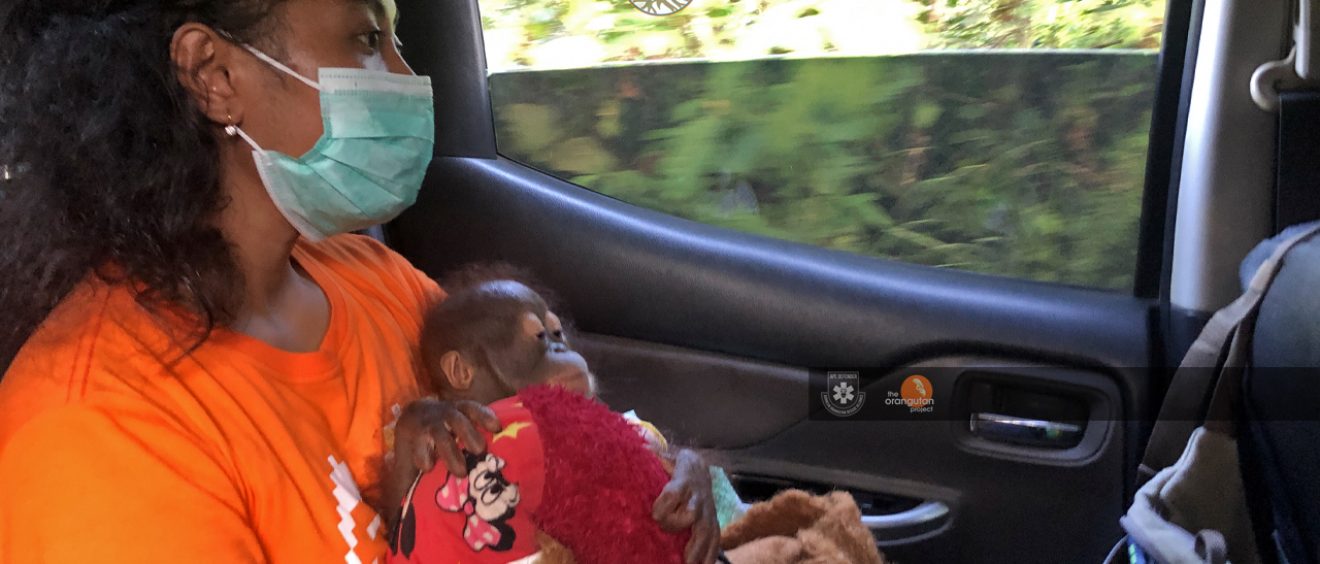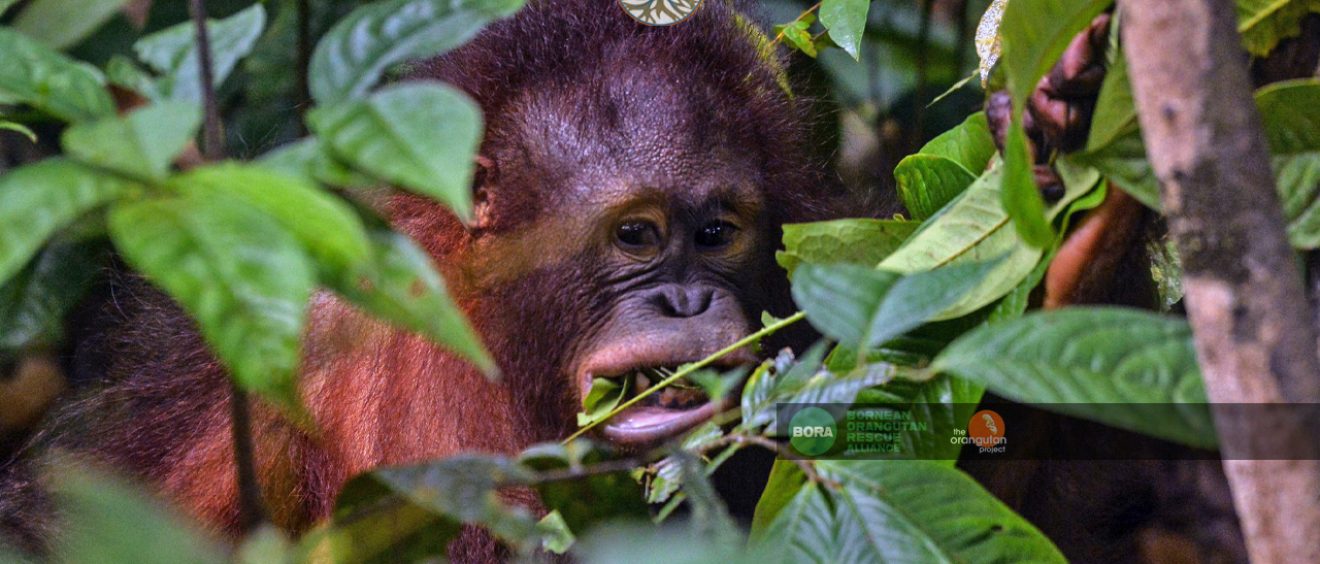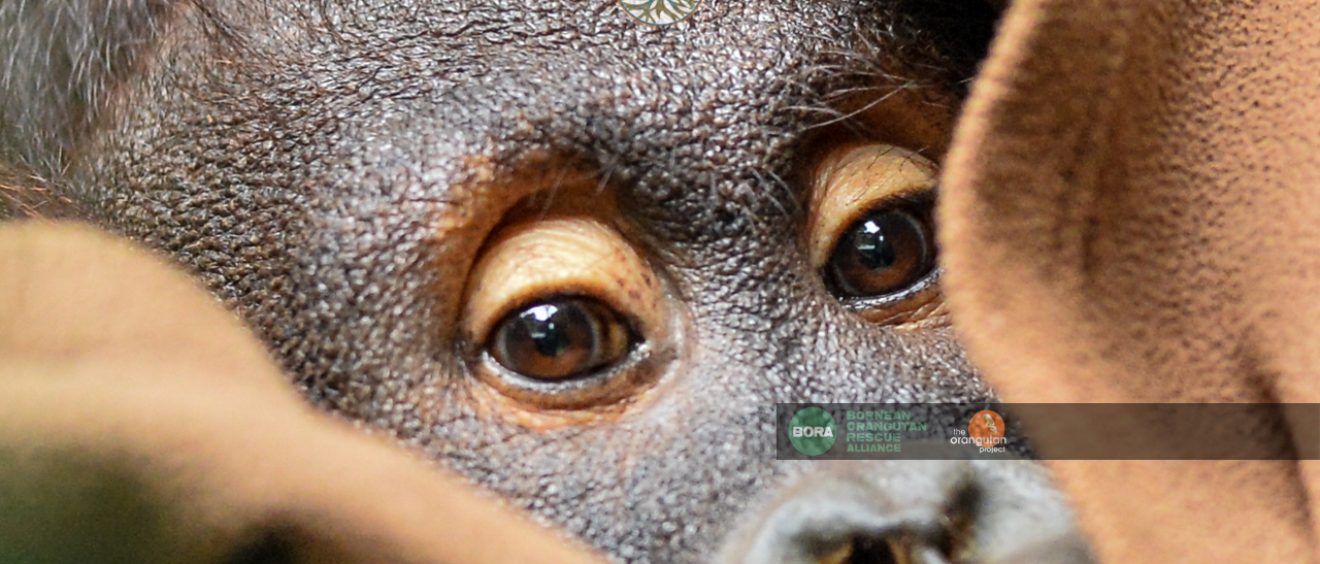Yesterday, we rescued a baby orangutan from the village of Long Gie, for the third time in the very same village. What is happening to this village? Arif, the captain of the APE Crusader Team shares this story for you.
One of the main tasks of the APE Crusader is mitigating conflict between humans versus orangutans or wildlife in general. Due to limited resources, the team reduce the work coverage, from covering the Borneo island to a more specific area: East Borneo. For the last 2 years, the team has responded to 160 cases in 6 districts: East Kutai, Berau, Bontang, West Kutai, Kutai Kartanegara, and Pasir. The roots of the conflict are various, from coal mining, road development, settlement, and oil palm plantation. On average, they should go to the field every 4 or 5 days. One case needs at least 3 days. It makes them work 24/7. Almost no break.
Mitigating conflict is an art of communication as the team has to develop good relationships among the stakeholders: government, local people, companies, and even the other NGOs. We even have to delay the publication or even simply not publish the story as we have to make everybody happy and the most important thing is: the orangutan. Not necessary to be heroic in social media if it is a threat to the life of other orangutans that are not being rescued yet and hurt the stakeholders.
Long Gie village is located on the river bank Kelay, warm, lot of natural foods and plenty of water. Both humans and orangutans love this kind of place. Local people and orangutans have been coexisting in the habitat for a long time until the companies get the concession to utilize lands and forests. Competition for natural resources becomes unavoidable. The company may have trained staff to deal with wild animals to keep their reputation and prevent legal problems. How about local people? Working with companies is much easier. Just develop and run internal regulations. Give punishment to those who break it. Very contrary to local communities. As there is no possibility to punish them or even control them, we need to work in every way to minimize the negative impact on both sides: humans and animals. Things become more complicated in the last two years since the swine flu kill most wild boars in the forest, and the natural fruit also decreased a lot due to more rains, somehow the wild animals, including orangutans search for food in and around humans settlements across Borneo and Sumatra. The last two years were peak seasons for humans versus wildlife. Just within 1 year, we rescued two babies need to be rescued from Long Gie. The background story is very similar: spot a baby orangutan crying with no mother and take them home. Not long time after the first rescue, the COP team investigated the case and socialize the protection of orangutans in the village. Arif, the Captain also uses his day off to visit Long Gie village and stay there for a couple of days “holiday”.
Arif has been serving the government for an energy program in Long Gie, a remote village on the bank of Kelay River, East Borneo. He has been living there for about one year and is considered local by locals. His local knowledge and skill in social work are essential for a grassroots organization like COP. His good personal relationship with COP staff has moved him to join the team. Now, he is the Captain of our APE Crusader Team.
He and the team need more support. Yesterday’s rescue is evidence that we have to work harder and smarter to make everybody in the village and many other villages understand the protection of orangutans. Especially since there are no signs that conflict is decreasing and dry seasons are coming, means forest fires are threatening nowadays.



